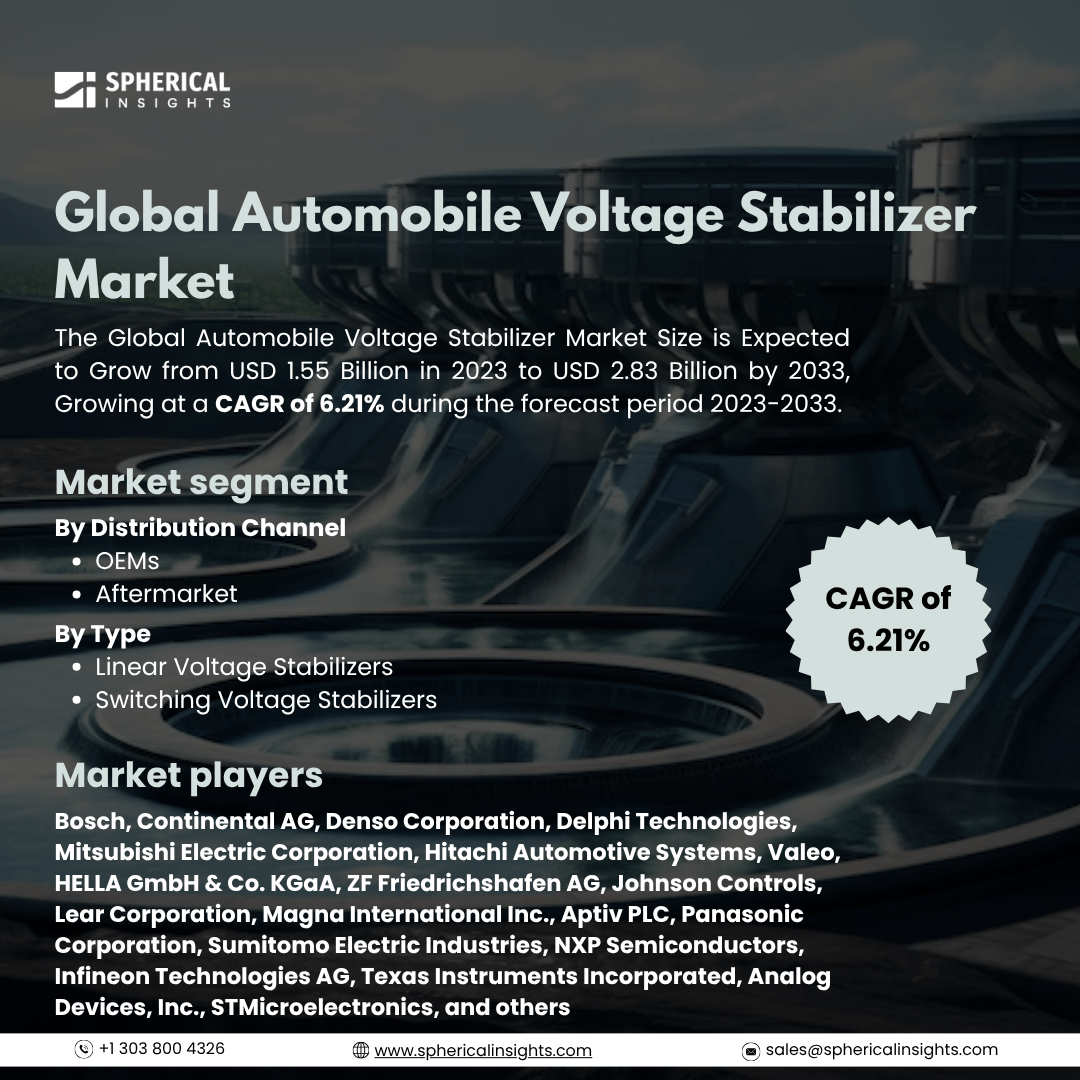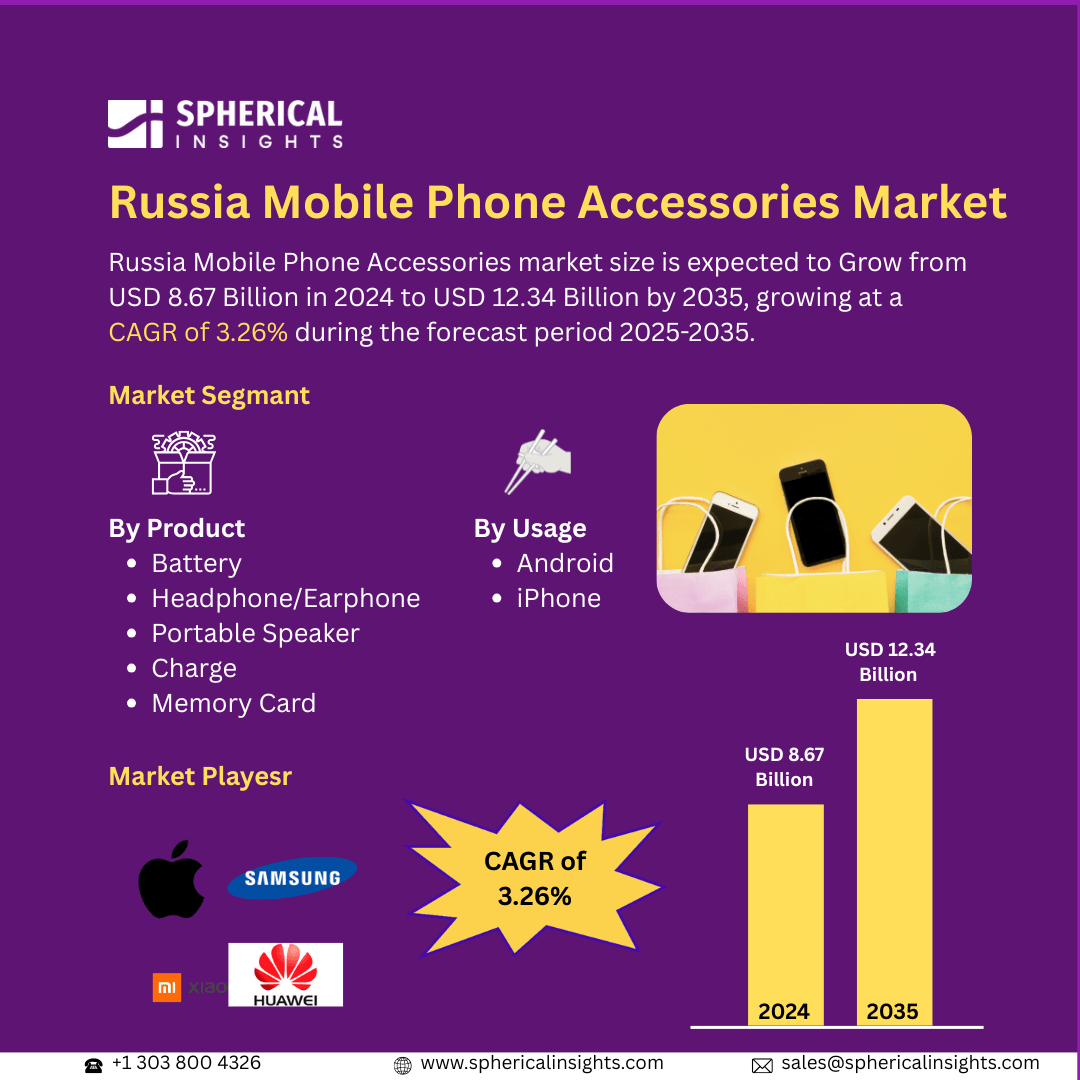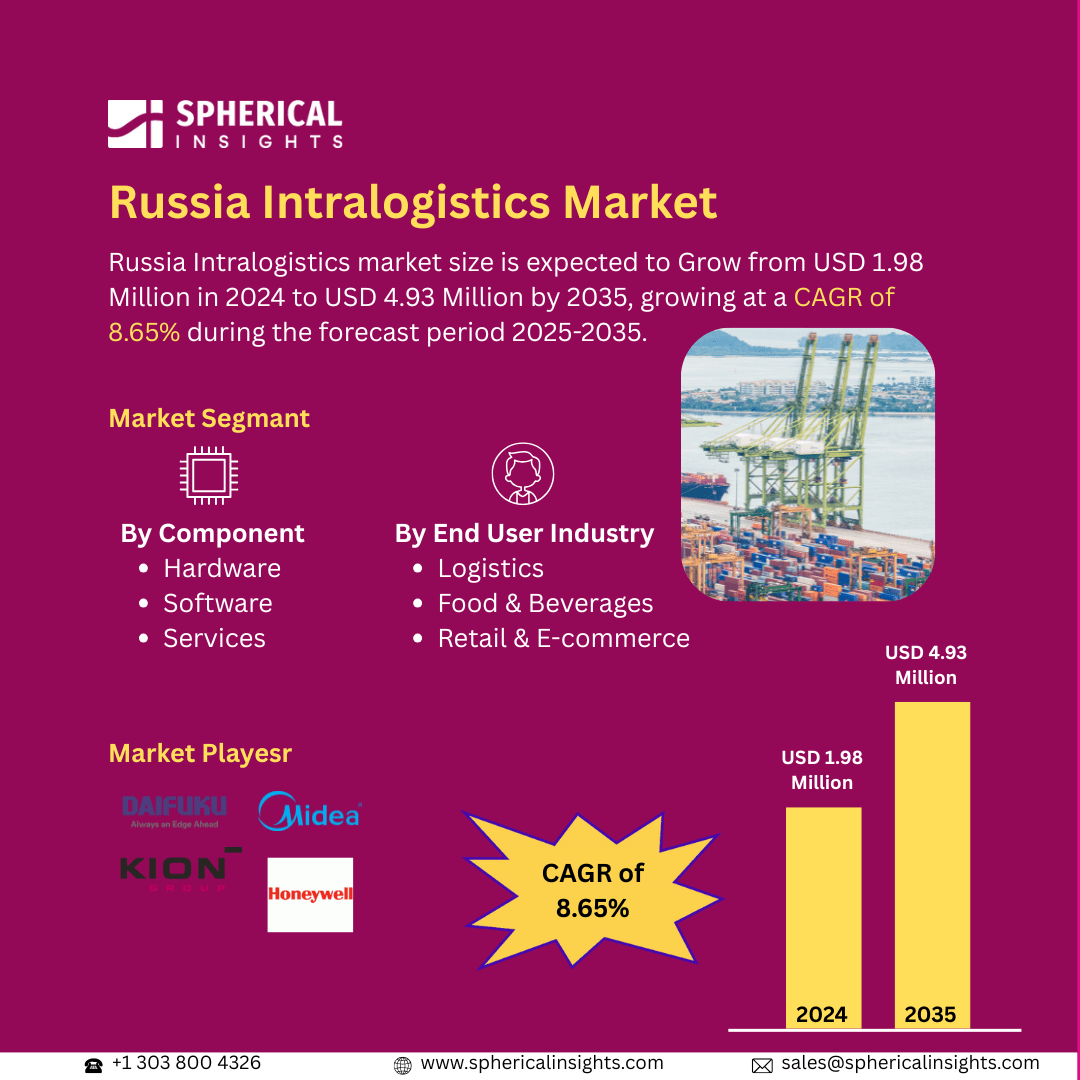Global Automobile Voltage Stabilizer Market Size To Exceed USD 2.83 Billion By 2033
According to a research report published by Spherical Insights & Consulting, The Global Automobile Voltage Stabilizer Market Size is Expected to Grow from USD 1.55 Billion in 2023 to USD 2.83 Billion by 2033, Growing at a CAGR of 6.21% during the forecast period 2023-2033.
Browse 210 market data Tables and 45 Figures spread through 190 Pages and in-depth TOC on The Global Automobile Voltage Stabilizer Market Size, Share, and COVID-19 Impact Analysis, By Type (Linear Voltage Stabilizers, Switching Voltage Stabilizers), By Distribution Channel (OEMs, Aftermarket), and By Region (North America, Europe, Asia-Pacific, Latin America, Middle East, and Africa), Analysis and Forecast 2023 - 2033
The automobile voltage stabilizer market revolves around devices designed to maintain a consistent voltage level within vehicles. These stabilizers are performing a vital role in protecting sensitive electronic components from voltage fluctuations, ensuring the smooth operation of systems like engine control units (ECUs), infotainment systems, and safety features. The increasing demand for innovative electronics for automobiles and the increasing acceptance of electric cars (EVs) are the primary drivers of this consistent rise. The need for voltage regulation in modern automobiles to guarantee the most efficient potential performance for electrical equipment and systems is the main factor driving the industry. The need for a consistent and reliable power supply is growing essential as the electrical components in automobiles, from entertainment and navigation to advanced driver assistance systems (ADAS), which support the market growth. However, high upfront cost with complexity in technical implementation shrinks their wide adoption.
The switching voltage stabilizers segment accounted for a significant share of the global automobile voltage stabilizer market in 2023 and is anticipated to grow at a rapid pace over the forecast period.
On the basis of the type, the global automobile voltage stabilizer market is divided into linear voltage stabilizers, switching voltage stabilizers. Among these, the switching voltage stabilizers segment accounted for a significant share of the global automobile voltage stabilizer market in 2023 and is anticipated to grow at a rapid pace over the forecast period. This is due to their great efficiency and capacity to manage heavy current loads, provide more control over the output voltage, and capacity to deliver steady voltage with little power loss.
The OEMs segment dominated the global automobile voltage stabilizer market in 2023 and is expected to grow at a remarkable CAGR over the forecast period.
On the basis of the distribution channel, the global automobile voltage stabilizer market is divided into OEMs and aftermarket. Among these, the OEMs segment dominated the global automobile voltage stabilizer market in 2023 and is expected to grow at a remarkable CAGR over the forecast period. This segmental growth is influenced by their guarantee that the stabilizers fulfill the distinctive requirements for different automobile makes and applications, concerning standard norms.
Asia Pacific is anticipated to hold the greatest revenue share of the global automobile voltage stabilizer market over the forecast period.
Asia Pacific is projected to hold the largest share of the global automobile voltage stabilizer market over the forecast period. The regional market growth is propelled by a strong automotive manufacturing ecosystem and advantageous economic conditions. Moreover, the presence of key automakers and the government's vigorous promotion of the use of electric vehicles make a profitable market for voltage stabilizers.
Europe is anticipated to grow at the fastest CAGR of the global automobile voltage stabilizer market over the forecast period. The market growth throughout the region is further accelerated due to the expansion of electric car charging infrastructure and ongoing technological advancements. Further, regional governments' encouragement for electric vehicles as a sustainable option and growing emphasis on strict laws and requirements about car safety and emissions, are major factors propelling the market's expansion.
Company Profiling
Major vendors in the global automobile voltage stabilizer market are Bosch, Continental AG, Denso Corporation, Delphi Technologies, Mitsubishi Electric Corporation, Hitachi Automotive Systems, Valeo, HELLA GmbH & Co. KGaA, ZF Friedrichshafen AG, Johnson Controls, Lear Corporation, Magna International Inc., Aptiv PLC, Panasonic Corporation, Sumitomo Electric Industries, NXP Semiconductors, Infineon Technologies AG, Texas Instruments Incorporated, Analog Devices, Inc., STMicroelectronics, and others.
Key Target Audience
- Market Players
- Investors
- End-users
- Government Authorities
- Consulting And Research Firm
- Venture capitalists
- Value-Added Resellers (VARs)
Recent Development:
- In May 2024, ABLIC introduced the S-19990/9 Series, a cutting-edge automotive low EMI step-up switching regulator controller. This series boasts the industry's lowest operation voltage of 3V, making it ideal for emergency backup battery downsizing, cost reduction, and noise reduction. It supports advanced safety requirements in vehicles, ensuring consistent operation even during power loss caused by accidents.
Market Segment
This study forecasts revenue at global, regional, and country levels from 2023 to 2033. Spherical Insights has segmented the global automobile voltage stabilizer market based on the below-mentioned segments:
Global Automobile Voltage Stabilizer Market, By Type
- Linear Voltage Stabilizers
- Switching Voltage Stabilizers
Global Automobile Voltage Stabilizer Market, By Distribution Channel
Global Automobile Voltage Stabilizer Market, By Regional
- North America
- Europe
- Germany
- UK
- France
- Italy
- Spain
- Russia
- Rest of Europe
- Asia Pacific
- China
- Japan
- India
- South Korea
- Australia
- Rest of Asia Pacific
- South America
- Brazil
- Argentina
- Rest of South America
- Middle East & Africa
- UAE
- Saudi Arabia
- Qatar
- South Africa
- Rest of the Middle East & Africa



